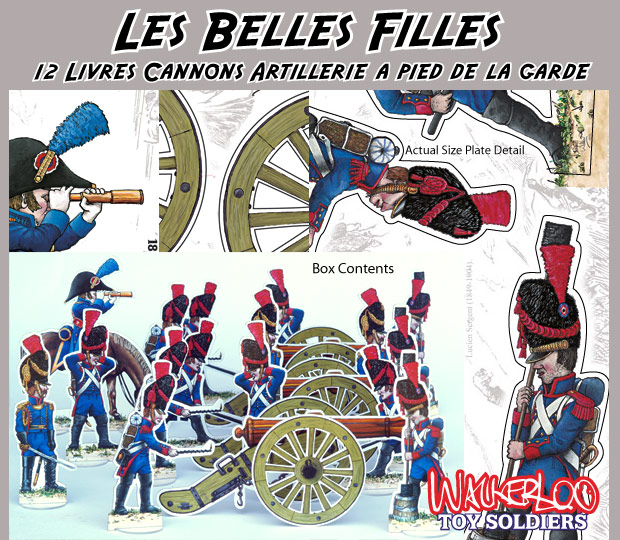
| Napoleon had been an officer in the artillery so at Waterloo he oversaw the artillery positioning personally. The Foot Artillery of Napoleon's Imperial Guard were the cream of the French Artillery. They used 12lb cannons, the weight of the cannon balls they fired. These were the biggest guns with the longest range on the battlefield of Waterloo. But such huge cannons were very heavy (over 2 tons!) and took a long time to move and reload, especially in the muddy conditions the battle was fought in. Napoleon called these cannons his 'beautiful daughters'. Some say he loved them too much as they were not included in the 'Grand Battery' and he was reluctant to deploy them to support his final infantry attacks, even toward the end of the battle. |

|